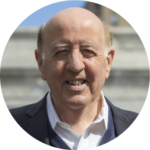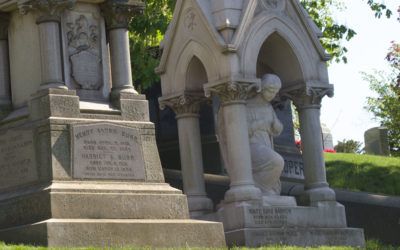Simply Smart One
How to Get Smarter
Simply Smart One—How to Get Smarter
By Robert DiYanni, New York University
TABLE OF CONTENTS
Preface—Why and How to Get Smarter
PART ONE—Establishing Smart Skills—Thinking, Critical & Creative
Chapter One Why Thinking Matters / Three Key Aspects of Thinking
Chapter Two Thinking About Information
Chapter Three How to Become a Creative Thinker
Chapter Four Thinking about Innovation
Interlude—Critical and Creative Thinking in the Workplace
PART TWO—Cultivating Smart Skills—Critical Reading & Writing
Chapter Five Reading Toward Thinking
Chapter Six How to Read Great Books
Chapter Seven Writing—Learning and Process
Chapter Eight The Habit of Writing / Connecting Reading & Writing
Coda Seven Smart Habits
Appendix Future Thinking
References
Preface: Why and How to Get Smarter
Most of us, most of the time, believe that we are smart—smart enough to get on with our work and with our lives reasonably well. There is little reason to doubt that we are largely right about this. And yet we may also recognize that there is much we don’t know, and many things we don’t do well, if at all.
However smart you are already, what if you could become smarter? How might getting smarter improve your thinking, increase your confidence, and enhance your life in other ways?
And so, I suggest that you will find it useful (and pleasurable) to get smarter in a few key ways—becoming a more confident thinker, a more critical reader, and a more accomplished communicator. I believe that it will be worth your while to invest in improving these intertwined skills. Doing so will make you a more valued friend, a more interesting colleague, and a more accomplished version of yourself. Improving your capacity for productive thinking, critical reading, and effective writing and oral communicating will come in handy.
How, you might ask?
Becoming smarter in these ways can enrich your life intellectually, emotionally, and socially. Becoming smarter will improve your ability to relate to and work with others. It will increase your enjoyment of life and help you flourish. You will become more competent, skillful, and knowledgeable, more enjoyable to be around and spend time with.
And there’s more.
Becoming smarter keeps your mind sharp as you age and serves as an antidote to the accelerating proliferation of disinformation—making you more discerning. The critical and creative thinking skills you improve will help you make sound decisions in your personal and professional lives.
Critical thinking aids judgment, abets discernment, clarifies values, and deepens understanding. It will make you wiser.
An ability to think creatively, with imagination, will help you generate ideas and solve problems that don’t readily yield to critical thinking. Creative thinking is a basic human capacity, one we possess in abundance when young, but allow to atrophy as we age. But this decay of our imaginative capacity is not inevitable; it does not have to happen.
In this book’s opening chapter, I explain why it’s worth developing both your critical and creative thinking abilities. I explain why quality thinking matters to us all, today more than ever before. In “Three Key Aspects of Thinking,” I identify key aspects of thinking: (1) combining and connecting; (2) blending art and science; and (3) embracing ambiguity. Each of these approaches extends our thinking while also deepening it.
Chapter Two invites you to consider the challenges of information overload—and ways to cope with it. Misinformation and disinformation plague us from every side, polarizing our thinking, polluting our politics, infecting public behavior. I explain how to compensate for these and other information menaces.
“How to Become a Creative Thinker” (Chapter Three) explains how you can make creative thinking a regular part of your life, and how to develop a flourishing imagination. We need imaginative thinking today to generate fresh ways to solve increasingly wicked problems. A companion fourth chapter applies creative thinking strategies to innovation. Innovative thinking improves our lives and the lives of others; it enables progress across many domains.
In Chapter Seven, I explore the relationship between writing and learning, explaining how writing extends and deepens learning, and why. The book’s eighth and final chapter offers advice about how you can develop the all-important habit of writing. It includes, as well, guidelines for exploiting the synergies between reading and writing.
A coda offers specific, concrete advice about how you can develop 8 habits for getting smarter right away. And an Appendix explores various types of future thinking: interdisciplinary thinking, systems thinking, institutional and architectural design thinking, innovative thinking, and social innovation.
Simply Smart One is designed to help you improve your reading, writing, thinking, and oral communication—and apply them to challenges you confront personally and professionally. Let Simply Smart—How to Get Smarter Fast serve as your guide to becoming more knowledgeable, wiser, and more discerning about all manner of things.
Current Writing Projects
My current writing projects are linked below: (1) a book on reading literature (Improvisations); (2) two books on getting smarter (fast and across the board); (3) a pair of memoirs about my teaching life (50 years+) and my life with music (even more years!). Also included is information about my biggest work-in-progress: an encyclopedic summa pedagogica, with the current title: Provocative Pairs—Learning with the World’s Masters (152 chapters—and counting—each chapter a dozen double-spaced pages, with most chapters devoted to a pair of great masters past and present).
For each of these works in the making, I have provided a table of contents and preface. A couple of them also include a sample chapter. An additional book I have in the works is Poems to Live By, for which I’ve included about a third of what I’ve written so far—also with a brief TOC and prefatory note.
Provocative Pairs—Learning with the Masters
Volume I:
Major Influencers Past and Present
Provocative Pairs—Learning with the Masters
Volume II:
Humanities, Sciences, and More
Simply Smart One
How to Get Smarter Fast
Simply Smart Two
How to Get Smart About Humanities
Simply Smart Three
How to Get Smart About Science and Math
Reading Literature: Improvisations and Explorations
The Teaching Life: Why Teaching Matters
Living with Music: A Glorious Journey
Poems to Live By
Essays: Reflections and Ruminations

Robert DiYanni
Author ⪢ | Professor ⪢ | Consultant ⪢
Robert DiYanni is a professor of humanities at New York University, having served as an instructional consultant at the NYU Center for the Advancement of Teaching and Center for Faculty Advancement. For these centers he conducted workshops and seminars on all aspects of pedagogy, consulted with faculty about teaching concerns, visited and observed classes, and provided a wide range of pedagogical consultative services. Professor DiYanni serves on the faculties of the School of Professional Studies and the Stern School of Business at NYU. He earned his undergraduate degree in English from Rutgers University, attended a Master of Arts in Teaching program at Johns Hopkins University, and received a Ph.D. in English Language and Literature from the City University of New York Graduate Center.
In addition to his work at NYU, Dr. DiYanni has taught at City University of New York, at Pace University, and as a Visiting Professor at Tsing Hua University in Taiwan and at Harvard University. As a high school teacher for four years and a college professor for more than four decades, Professor DiYanni has taught students from eighth grade through doctoral candidates. Most of his teaching, however, has been with college and university undergraduates. His numerous workshops, offered in more than twenty countries, have been attended by secondary school teachers and administrators, as well as by undergraduate college and university faculty and administrators.
Dr. DiYanni has written and edited numerous textbooks, among them, Literature: An Introduction; The Scribner Handbook for Writers (with Pat C. Hoy II); Arts and Culture: An Introduction to the Humanities, (with Janetta Rebold Benton), the basis for a series of lectures given at the Metropolitan Museum of Art; and Modern American Poets: Their Voices and Visions, which served as a companion text for the PBS television series Voices and Vision, which aired in the late 1980s.
You may also want to read these…
Comparing Poems
Comparison is one of the best ways of teaching anything; it is especially useful for reading and teaching…
The Widow of Ephesus
Once there was a certain married woman in the city of Ephesus, whose faithfulness to her husband…
Villanelle Variations
“I learn by going where I have to go,” writes Theodore Roethke in “The Waking.” “The art of losing…


